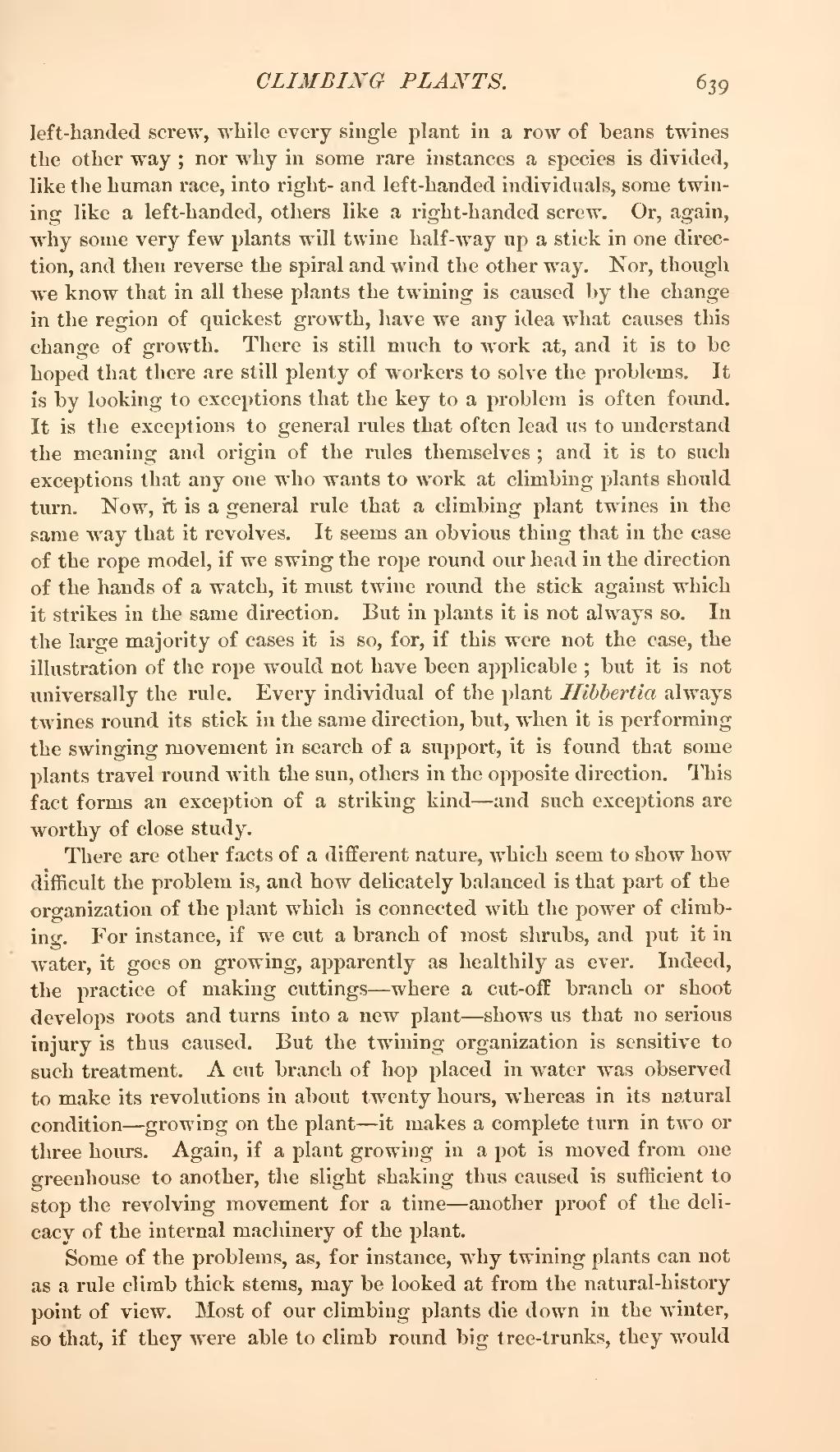left-handed screw, while every single plant in a row of beans twines the other way; nor why in some rare instances a species is divided, like the human race, into right-and left-handed individuals, some twining like a left-handed, others like a right-handed screw. Or, again, why some very few plants will twine half-way up a stick in one direction, and then reverse the spiral and wind the other way. Nor, though we know that in all these plants the twining is caused by the change in the region of quickest growth, have we any idea what causes this change of growth. There is still much to work at, and it is to be hoped that there are still plenty of workers to solve the problems. It is by looking to exceptions that the key to a problem is often found. It is the exceptions to general rules that often lead us to understand the meaning and origin of the rules themselves; and it is to such exceptions that any one who wants to work at climbing plants should turn. Now, it is a general rule that a climbing plant twines in the same way that it revolves. It seems an obvious thing that in the case of the rope model, if we swing the rope round our head in the direction of the hands of a watch, it must twine round the stick against which it strikes in the same direction. But in plants it is not always so. In the large majority of cases it is so, for, if this were not the case, the illustration of the rope would not have been applicable; but it is not universally the rule. Every individual of the plant Hibbertia always twines round its stick in the same direction, but, when it is performing the swinging movement in search of a support, it is found that some plants travel round with the sun, others in the opposite direction. This fact forms an exception of a striking kind—and such exceptions are worthy of close study.
There are other facts of a different nature, which seem to show how difficult the problem is, and how delicately balanced is that part of the organization of the plant which is connected with the power of climbing. For instance, if we cut a branch of most shrubs, and put it in water, it goes on growing, apparently as healthily as ever. Indeed, the practice of making cuttings—where a cut-off branch or shoot develops roots and turns into a new plant—shows us that no serious injury is thus caused. But the twining organization is sensitive to such treatment. A cut branch of hop placed in water was observed to make its revolutions in about twenty hours, whereas in its natural condition—growing on the plant—it makes a complete turn in two or three hours. Again, if a plant growing in a pot is moved from one greenhouse to another, the slight shaking thus caused is sufficient to stop the revolving movement for a time—another proof of the delicacy of the internal machinery of the plant.
Some of the problems, as, for instance, why twining plants can not as a rule climb thick stems, may be looked at from the natural-history point of view. Most of our climbing plants die down in the winter, so that, if they were able to climb round big tree-trunks, they would
